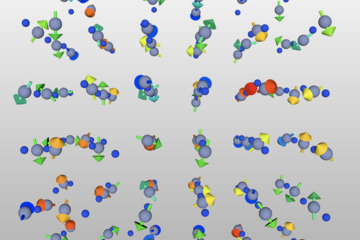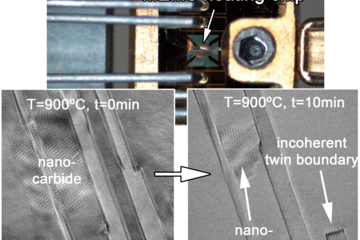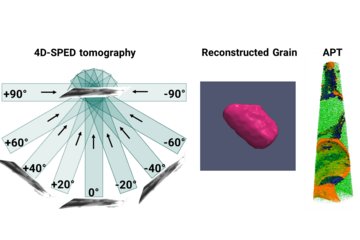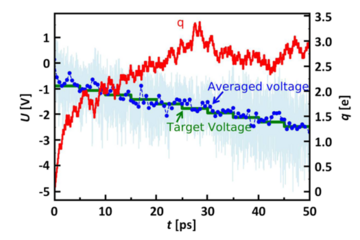All genres
1.
Journal Article
Simultaneously enhancing strength-ductility synergy and strain hardenability via Si-alloying in medium-Al FeMnAlC lightweight steels. Acta Materialia 245, 118611 (2023)
2.
Journal Article
Revisiting o phase embrittlement in metastable b titanium alloys: Role of elemental partitioning. Scripta Materialia 193, pp. 38 - 42 (2021)
3.
Journal Article
Design of a dual-phase hcp-bcc high entropy alloy strengthened by ω nanoprecipitates in the Sc–Ti–Zr–Hf–Re system. Materials and Design 192, 108716 (2020)
4.
Journal Article
Effects of transformation-induced plasticity on the small-scale deformation behavior of single crystalline complex concentrated alloys. Scripta Materialia 176, pp. 122 - 125 (2020)
5.
Journal Article
Composition of the nanosized orthorhombic O′ phase and its direct transformation to fine α during ageing in metastable β-Ti alloys. Scripta Materialia 170, pp. 183 - 188 (2019)
6.
Journal Article
On the origin of the improvement of shape memory effect by precipitating VC in Fe–Mn–Si-based shape memory alloys. Acta Materialia 155, pp. 222 - 235 (2018)
7.
Journal Article
ω phase acts as a switch between dislocation channeling and joint twinning- and transformation-induced plasticity in a metastable β titanium alloy. Acta Materialia 151, pp. 67 - 77 (2018)
8.
Journal Article
Partial recrystallization of gum metal to achieve enhanced strength and ductility. Acta Materialia 135, pp. 400 - 410 (2017)
9.
Journal Article
Complexion-mediated martensitic phase transformation in Titanium. Nature Communications 8, 14210, pp. 1 - 8 (2017)
10.
Journal Article
From electronic structure to phase diagrams: A bottom-up approach to understand the stability of titanium-transition metal alloys. Acta Materialia 113, pp. 311 - 319 (2016)
11.
Journal Article
On the mechanism of {332} twinning in metastable β titanium alloys. Acta Materialia 111, pp. 173 - 186 (2016)
12.
Journal Article
Deformation mechanism of ω-enriched Ti–Nb-based gum metal: Dislocation channeling and deformation induced ω–β transformation. Acta Materialia 100, 12375, pp. 290 - 300 (2015)
13.
Journal Article
Damage resistance in gum metal through cold work-induced microstructural heterogeneity. Journal of Materials Science 50 (17), pp. 5694 - 5708 (2015)
14.
Journal Article
Origin of shear induced β to ω transition in Ti–Nb-based alloys. Acta Materialia 92, pp. 55 - 63 (2015)
15.
Talk
Damage Resistance through Hierarchical Microstructure Development on GUM Metal. Materials Science and Engineering (MSE2014), Darmstadt, Germany (2014)
16.
Talk
Gum metal plasticity. The International Symposium on Plasticity 2014, Freeport, Bahamas, USA (2014)
17.
Talk
Microstructural and Mechanical Characterization of Cold Work Effects in GUM Metal. 22th GLADD meeting, Düsseldorf, Germany (2013)
18.
Talk
Microstructural and Mechanical Characterization of Cold Work Effects in GUM Metal. 9th International Conference on Advances in Experimental Mechanics, Cardiff, UK (2013)
19.
Poster
Site-preferential recrystallization and nano-precipitation to achieve improved mechanical properties. MRS Fall Meeting 2016, Boston, MA, USA (2016)
20.
Poster
Origin of Beta to Omega Transition Induced by {211}<111> Shear in Ti–Nb-based Alloys. MSE 2014, Darmstadt, Germany (2014)











